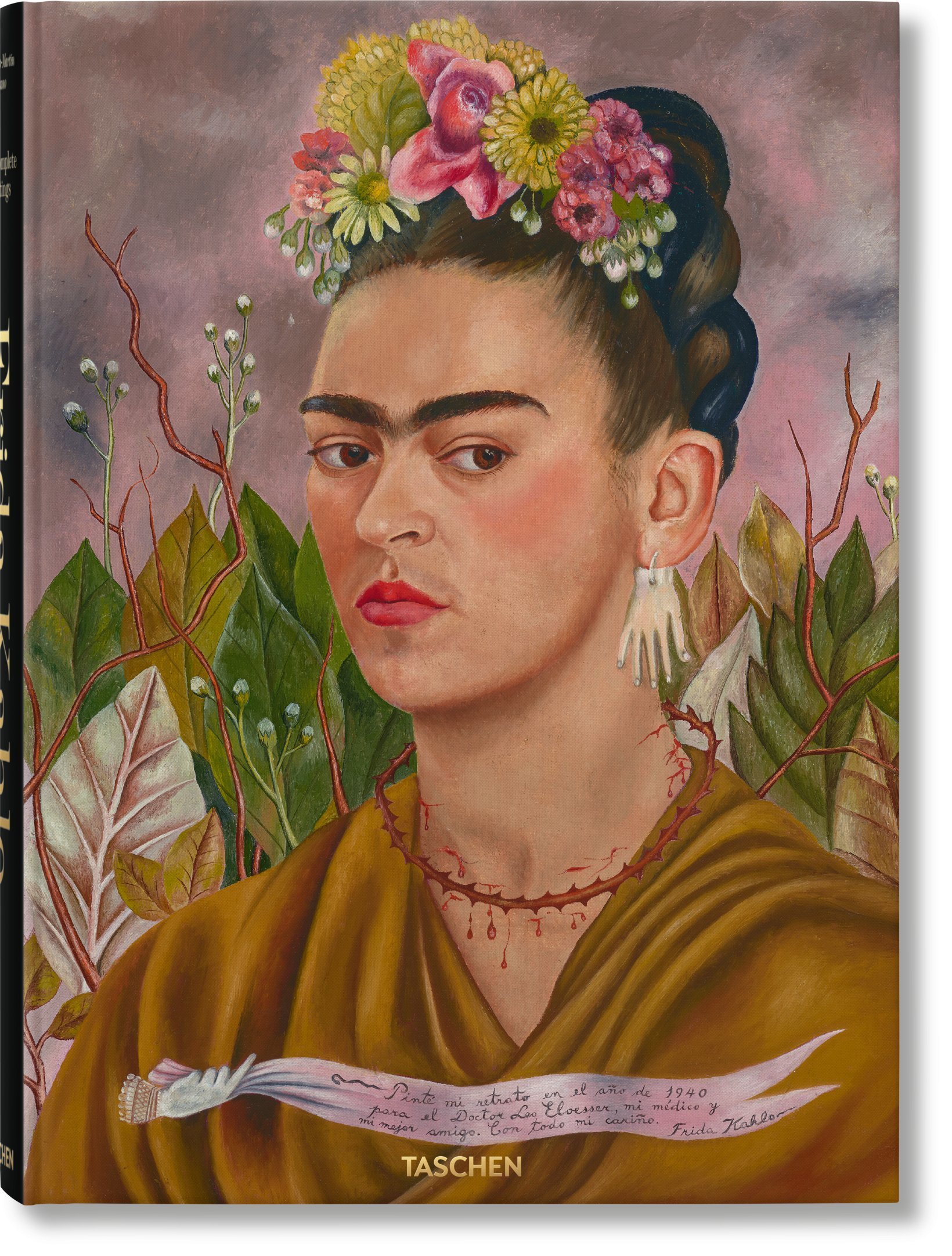
Despite her lasting fame, Frida Kahlo made surprisingly few works in her life. Now, all 152 of the artist’s documented paintings have been collected in a massive new coffee table book from Taschen, Frida Kahlo: The Complete Paintings by Luis-Martín Lozano.
The gorgeously illustrated $200 tome includes reproductions and analysis of all of Kahlo’s known paintings, including several works that have been lost, numerous photographs of the great Mexican artist, and a detailed account of her life and career.
For author Luis-Martín Lozano, the book represents 30 years of research on the artist, tracking down artworks in private collections that are rarely loaned or reproduced. (He published his first book on the artist in 2001.)
“Every single painting is covered—that’s never been done before,” Lozano, an art historian and curator, told Artnet News, noting that some of these paintings haven’t been exhibited in over 80 years.
Frida Kahlo, Self-portrait (Time Flies) (ca. 1929). Photo by LML Archive, ©Banco de Mexico Diego Rivera Frida Kahlo Museums Trust/VG Bild-Kunst, Bonn 2021; reproduction authorized by the Instituto Nacional de Bellas Artes y Literatura, 2021.
“The people who write about Kahlo tend to repeat the same ideas and the same paintings over and over,” he added. “There’s lack of real research on Kahlo.”
Two private collections have become major lenders to institutional exhibitions about Kahlo, meaning that the visibility of works owned by Doris Olmedo and Jacques and Natasha Gelman has done much to shape public knowledge of and scholarship about the artist.
In addition to showcasing Kahlo’s lesser-known works, Lozano hopes that the book will also broaden readers’ understanding of the artist, allowing them to appreciate the complexity of her paintings beyond the ways in which they illustrate her iconic fashion, her Mexican identity, her health struggles, and her romantic relationships.
Frida Kahlo beside a Pre-Hispanic sculpture in the garden of the Casa Azul (1951). Photo ©bpk/IMEC, Fonds MCC/Gisèle Freun, ©Banco de Mexico Diego Rivera Frida Kahlo Museums Trust/VG Bild-Kunst, Bonn 2021; reproduction authorized by the Instituto Nacional de Bellas Artes y Literatura, 2021.
“Kahlo’s paintings talk much more about social and historical issues than has been pointed out,” Lozano said.
“I really hope readers realize how much more complex her painting is, and how well-versed she was in art history. She was looking at many, many sources, from German New Objectivity to Surrealism, and also Pre-Columbian art and Egyptian antiquities,” he added. “All this together makes her paintings much more than just her biography.”
See more paintings from the book below.
Frida Kahlo, Hospital Henry Ford (1932). Photo by akg-images, Museo Dolores Olmedo, Mexico City, Xochimilco, ©Banco de Mexico Diego Rivera Frida Kahlo Museums Trust/VG Bild-Kunst, Bonn 2021; reproduction authorized by the Instituto Nacional de Bellas Artes y Literatura, 2021.
Frida Kahlo, Ixcuhintli Dog with Me, (c. 1938). Photo by akg-images, ©Banco de Mexico Diego Rivera Frida Kahlo Museums Trust/VG Bild-Kunst, Bonn 2021; reproduction authorized by the Instituto Nacional de Bellas Artes y Literatura, 2021.
Frida Kahlo, The Heart (1937). Photo by Fine Art Images/Bridgeman Images, ©Banco de Mexico Diego Rivera Frida Kahlo Museums Trust/VG Bild-Kunst, Bonn 2021; reproduction authorized by the Instituto Nacional de Bellas Artes y Literatura, 2021.
Frida Kahlo, What Water Gave Me (1938). Photo by Christie’s Images/Bridgeman Images, ©Banco de Mexico Diego Rivera Frida Kahlo Museums Trust/VG Bild-Kunst, Bonn 2021; reproduction authorized by the Instituto Nacional de Bellas Artes y Literatura, 2021.
Frida Kahlo, The Dream (The Bed) (1940). Photo by Jorge Contreras Chacel. ©Banco de Mexico Diego Rivera Frida Kahlo Museums Trust/VG Bild-Kunst, Bonn 2021; reproduction authorized by the Instituto Nacional de Bellas Artes y Literatura, 2021.
Frida Kahlo, Self-portrait With Small Monkey (1945). Photo by akg-images, Museo Dolores Olmedo, Mexico City, Xochimilco, ©Banco de Mexico Diego Rivera Frida Kahlo Museums Trust/VG Bild-Kunst, Bonn 2021; reproduction authorized by the Instituto Nacional de Bellas Artes y Literatura, 2021.
Frida Kahlo, Without Hope (1945). Photo by akg-images, Museo Dolores Olmedo, Mexico City, Xochimilco, ©Banco de Mexico Diego Rivera Frida Kahlo Museums Trust/VG Bild-Kunst, Bonn 2021; reproduction authorized by the Instituto Nacional de Bellas Artes y Literatura, 2021.
Frida Kahlo, The Little Deer (1946). Photo by Fine Art Images, Bridgeman Images, ©Banco de Mexico Diego Rivera Frida Kahlo Museums Trust/VG Bild-Kunst, Bonn 2021; reproduction authorized by the Instituto Nacional de Bellas Artes y Literatura, 2021.
Frida Kahlo, Self-portrait (for Samuel Fastlicht), 1948. Photo by akg-images, ©Banco de Mexico Diego Rivera Frida Kahlo Museums Trust/VG Bild-Kunst, Bonn 2021; reproduction authorized by the Instituto Nacional de Bellas Artes y Literatura, 2021.
Frida Kahlo, Self-portrait (with Dr. Farill), 1951. Photo by Rafael Doniz, courtesy Hauser & Wirth Collection Services, ©Banco de Mexico Diego Rivera Frida Kahlo Museums Trust/VG Bild-Kunst, Bonn 2021; reproduction authorized by the Instituto Nacional de Bellas Artes y Literatura, 2021.